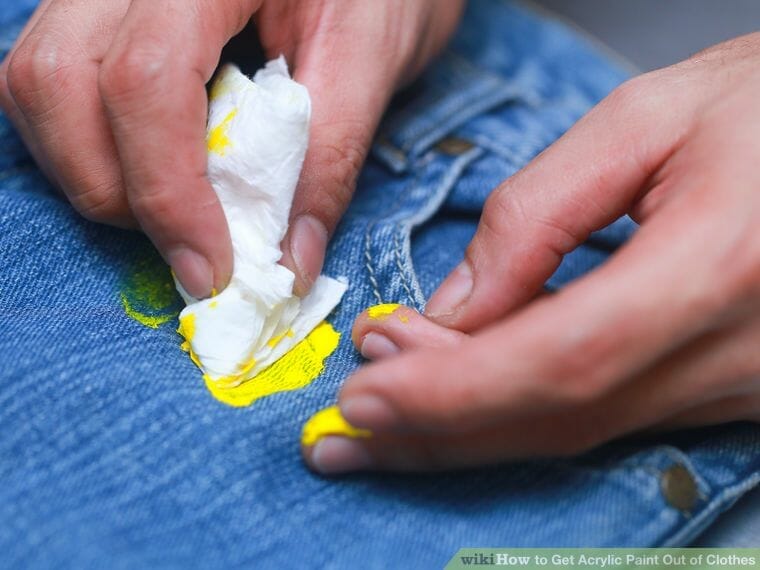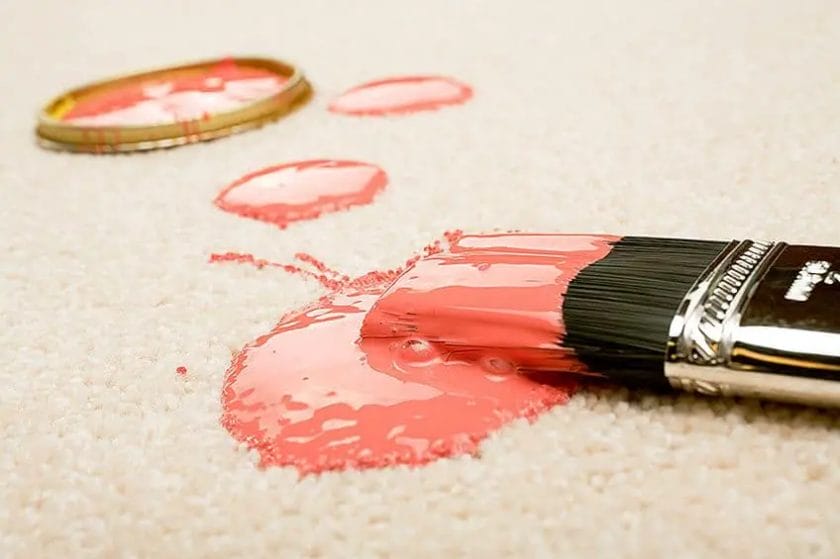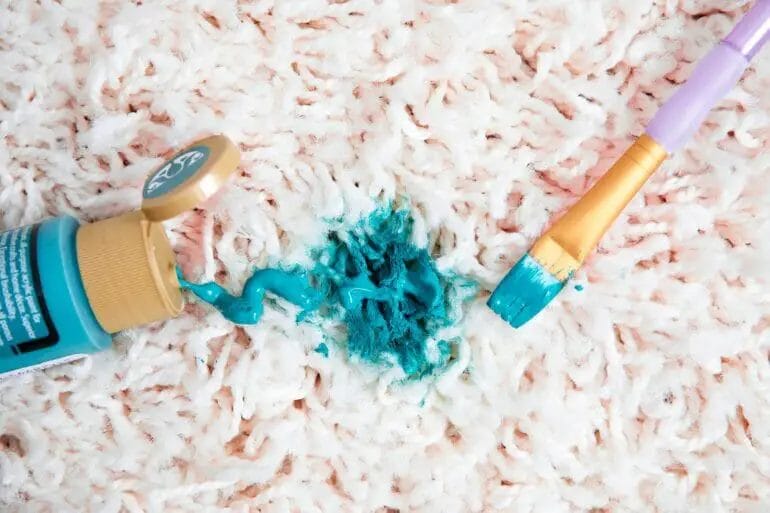Getting acrylic paint out of paint brushes can be a frustrating task, but with the right methods, it doesn’t have to be. Whether you are a professional artist or a hobbyist, knowing how to clean and maintain your brushes is essential to keep them in good condition and prolong their lifespan. In this article, we will explore some effective techniques and tips to help you remove dried or wet acrylic paint from your paint brushes easily and restore them to their pristine state.

Natural Remedies to Clean Acrylic Paint Off Brushes
When it comes to cleaning acrylic paint off brushes, using natural remedies can be an effective and eco-friendly option. Whether you are an artist or a DIY enthusiast, keeping your brushes clean is essential to preserve their quality and extend their lifespan. In this section, we will explore some natural remedies that can help you remove acrylic paint from your brushes easily and effectively.
1. Olive Oil
Olive oil is not only great for cooking, but it can also be used as a natural brush cleaner. Start by rinsing your brush with warm water to remove any excess paint. Then, pour a small amount of olive oil onto a clean cloth or paper towel. Gently rub the bristles of the brush in the oil, working it into the paint. Rinse the brush with warm water and repeat the process until the paint is completely removed. Finally, wash the brush with mild soap and water and let it dry.
2. Vinegar
Vinegar is a versatile household ingredient that can also be used to clean acrylic paint off brushes. Mix equal parts of vinegar and warm water in a container or a glass jar. Dip your brush into the mixture and let it soak for a few minutes. Swirl the brush around in the solution to loosen the paint. Rinse the brush with warm water and repeat if necessary. Wash the brush with mild soap and water and let it air dry.
3. Baking Soda
Baking soda is another natural remedy that can help remove acrylic paint from brushes. Make a paste by mixing baking soda with a small amount of water. Apply the paste to the bristles of the brush and gently work it into the paint. Rinse the brush with warm water and repeat the process until the paint is gone. Wash the brush with mild soap and water and let it dry.
4. White Spirit
If your brushes have stubborn acrylic paint that won’t come off with natural remedies alone, you can try using white spirit. However, keep in mind that white spirit is a solvent and should be used with caution. Wear gloves and work in a well-ventilated area. Dip your brush into the white spirit and swish it around to loosen the paint. Rinse the brush with warm water and wash it with mild soap and water. Remember to dispose of any white spirit properly.
5. Soap and Water
Sometimes, a simple solution of mild soap and warm water can do wonders in cleaning acrylic paint off brushes. Start by rinsing your brush under warm water to remove any excess paint. Then, apply a small amount of mild soap to the bristles and work it into a lather. Rinse the brush thoroughly with warm water, ensuring all the paint is removed. Gently reshape the bristles and let the brush air dry.
In summary, when it comes to cleaning acrylic paint off brushes, natural remedies can be a great alternative to harsh chemicals. Olive oil, vinegar, baking soda, white spirit (use with caution), and mild soap and water are all effective options. Remember to take proper care of your brushes by cleaning them regularly to maintain their performance and longevity.

Avoiding common mistakes when cleaning acrylic paint brushes
Acrylic paint brushes require proper cleaning and maintenance to ensure their longevity and optimal performance. Cleaning acrylic paint brushes might seem like a simple task, but there are common mistakes that many artists make which can lead to damage and deterioration of the brushes. In this section, we will discuss some of these common mistakes and provide tips on how to avoid them.
Using hot water
One of the most common mistakes that artists make when cleaning acrylic paint brushes is using hot water. Hot water can cause the bristles of the brush to expand and eventually loosen from the ferrule. This can result in bristle loss and a compromised brush shape. Instead, it is recommended to use lukewarm water when cleaning acrylic paint brushes.
Using harsh cleaners
Another mistake to avoid is using harsh cleaners or solvents to clean acrylic paint brushes. Acrylic paints are water-based and can be easily cleaned with water and mild soap. Harsh cleaners or solvents can damage the bristles and strip them of their natural oils. It is best to stick to gentle soap or specialized brush cleaners formulated for acrylic paint.
Not rinsing thoroughly
Proper rinsing is crucial when cleaning acrylic paint brushes. Failing to rinse the brushes thoroughly can leave behind residue that can harden and affect the performance of the brush. After cleaning the brushes with soap and water, make sure to rinse them thoroughly until the water runs clear.
Leaving brushes in water for too long
Leaving acrylic paint brushes soaking in water for extended periods can also lead to damage. The prolonged exposure to water can cause the bristles to become weak and lose their shape. It is important to clean the brushes promptly after use and avoid leaving them in water for too long.
Not reshaping the brushes
After cleaning acrylic paint brushes, it is important to reshape the bristles to their original shape. Neglecting to reshape the brushes can result in misshapen bristles and affect the quality of your brush strokes. To reshape the brushes, gently squeeze out excess water and reshape the bristles with your fingers or using a brush shaper.
Improper drying
Lastly, improper drying can also contribute to damage and deterioration of acrylic paint brushes. Avoid drying the brushes upright with the bristles pointing upward as this can cause water to seep into the ferrule and loosen the bristles. Instead, lay the brushes flat or hang them upside down to ensure proper drying.
In summary, avoiding common mistakes when cleaning acrylic paint brushes is essential to maintain their longevity and performance. Remember to use lukewarm water, gentle soap or specialized brush cleaners, rinse thoroughly, avoid leaving brushes in water for too long, reshape the bristles after cleaning, and dry them properly. By following these tips, you can ensure that your acrylic paint brushes remain in excellent condition for future use.

Essential tools and supplies for effective acrylic paint brush cleaning
Keeping your acrylic paint brushes clean is essential for maintaining their quality and longevity. Proper cleaning not only helps to remove paint residue but also prevents color contamination when switching between different colors. To achieve effective acrylic paint brush cleaning, you will need a few essential tools and supplies:
1. Water
The first and most basic tool for cleaning your acrylic paint brushes is water. Water helps to rinse off excess paint from the bristles and prepare them for deeper cleaning. Use lukewarm water for best results.
2. Palette or container
A palette or container is necessary for holding the water while cleaning your brushes. Choose a container that is wide enough to accommodate the brush bristles without bending them. Additionally, make sure it is not too shallow to prevent splashing.
3. Mild soap or brush cleaner
Mild soap or a specialized brush cleaner is crucial for removing oil and acrylic residue from your brushes. Choose a soap that is gentle and non-abrasive to prevent damaging the bristles. Alternatively, you can invest in a brush cleaner specifically designed for acrylic paint brushes.
4. Cleaning mat or paper towel
A cleaning mat or paper towel provides a surface for removing excess paint from the brushes. After rinsing the brush in water, gently wipe it on the cleaning mat or towel to ensure all paint residues are removed before proceeding to deeper cleaning.
5. Brush comb or brush cleaning pad
A brush comb or brush cleaning pad is useful for removing stubborn paint that may be trapped deep within the bristles. Use the comb or pad to gently scrub the bristles, ensuring that all paint particles are dislodged and washed away.
6. Brush conditioner or hair conditioner
After cleaning your acrylic paint brushes, it is important to condition the bristles to keep them soft and supple. Brush conditioner or hair conditioner can be applied after rinsing and gently massaged into the bristles. This helps to prevent bristle fraying and prolong the brush’s lifespan.
7. Drying rack or upright brush holder
Once your brushes are clean, it is crucial to allow them to dry properly to prevent mold or mildew growth. A drying rack or an upright brush holder will keep the brushes in the correct position, allowing any remaining water to drip away and air circulation to dry them thoroughly.
8. Protective gloves and apron
While not directly related to brush cleaning, wearing protective gloves and an apron is advisable to prevent any accidental paint spills or skin contact with cleaning products. This will help to keep you safe while working with acrylic paints and cleaning your brushes.
By having these essential tools and supplies at hand, you can ensure effective acrylic paint brush cleaning and maintain the quality and performance of your brushes for years to come.
Tips for Maintaining the Longevity of Acrylic Paint Brushes
Acrylic paint brushes are a valuable tool for artists who work with acrylic paints. These brushes come in a variety of shapes, sizes, and bristle types, and proper care and maintenance can extend their lifespan and ensure optimal performance. Here are some useful tips for maintaining the longevity of acrylic paint brushes:
1. Clean your brushes after each use
Acrylic paints can dry quickly and become difficult to remove from brush bristles. To prevent this, it is important to clean your brushes thoroughly after each use. Start by rinsing the brushes under warm water to remove excess paint. Then, use a mild soap or brush cleaner to gently wash the bristles. Work the soap into a lather and rinse until the water runs clear. Avoid using harsh solvents, as they can damage the bristles.
2. Shape and store brushes properly
After cleaning your brushes, reshape them to their original form. Use your fingers or a cloth to reshape the bristles into a point or a flat shape, depending on the brush type. Avoid leaving brushes standing upright in a jar or container, as this can cause the bristles to bend or warp. Instead, lay them flat or store them horizontally to maintain their shape.
3. Protect the brush tips
The tips of acrylic paint brushes are delicate and prone to damage. To protect them, you can use brush guards or covers. These are designed to keep the bristles in their proper shape and prevent them from being bent or crushed. Alternatively, you can wrap the bristles in a piece of paper or a clean cloth when not in use.
4. Avoid excessive pressure and twisting
When using acrylic paint brushes, it is important to avoid applying excessive pressure or twisting the bristles. This can cause the bristles to splay or break, compromising their performance. Instead, use gentle, gliding strokes and let the brush do the work. This not only protects the brush, but also allows for better control and precision in your artwork.
5. Store brushes in a suitable environment
Proper storage is key to maintaining the longevity of acrylic paint brushes. Avoid storing them in extreme temperatures or in direct sunlight, as this can cause the bristles to become brittle or discolored. Ideally, store your brushes in a clean and dry container or case, away from dust, moisture, and other potential contaminants.
By following these tips, you can ensure that your acrylic paint brushes remain in excellent condition for a longer period of time. Taking good care of your brushes not only helps you produce better artwork, but also saves you money by reducing the need for frequent brush replacements. So, make it a habit to clean, shape, and store your brushes properly, and enjoy the longevity and performance they provide.
FAQs
1. How can I remove acrylic paint from paint brushes?
To remove acrylic paint from paint brushes, you can follow these steps:
1. Rinse the brush with warm water to remove excess paint.
2. Use a mild soap or brush cleaner to wash the bristles.
3. Gently massage the bristles to remove any remaining paint.
4. Rinse the brush again with warm water.
5. Repeat the process if necessary.
6. Finally, reshape the bristles and let the brush air dry.
2. Are there any home remedies for removing acrylic paint from paint brushes?
Yes, you can try using a mixture of dish soap and warm water to clean acrylic paint from brushes. Soak the brushes in the mixture for a few minutes, then gently scrub the bristles to remove the paint. Rinse the brushes thoroughly with warm water and let them air dry.
3. Can I use vinegar to remove acrylic paint from paint brushes?
Yes, you can use vinegar to remove acrylic paint from paint brushes. Soak the brushes in a mixture of warm water and vinegar for about 30 minutes. Afterward, rinse the brushes with warm water and gently clean the bristles. Repeat the process if necessary and let the brushes air dry.
Conclusion
In conclusion, finding a solution to remove acrylic paint from your paint brushes is essential for maintaining their longevity and quality. By following the mentioned methods, such as rinsing the brushes with warm water immediately after use, using brush cleaners, or soaking them in a mixture of dish soap and water, you can effectively remove any residual paint and extend the lifespan of your brushes.
Remember to handle your paint brushes with care and avoid allowing the paint to dry completely on the bristles. Regular cleaning and proper storage will not only help in removing acrylic paint, but also ensure that your brushes stay in optimal condition for future use.
With these tips and techniques, you can keep your paint brushes clean and ready for your next artistic endeavor. So, don’t let the fear of neglected brushes hinder your creativity. Take care of your tools, and they will continue to serve you well.
